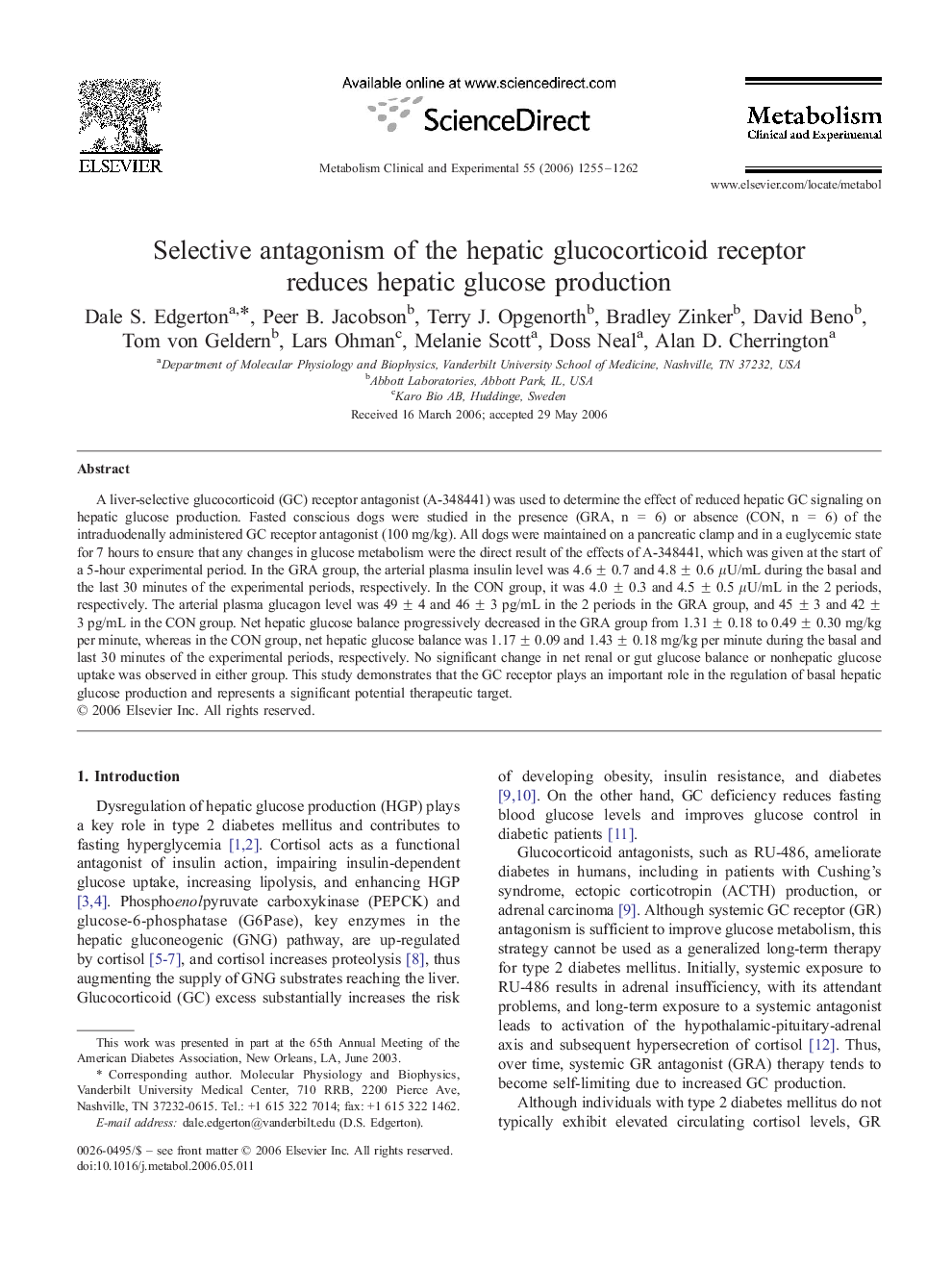| Article ID | Journal | Published Year | Pages | File Type |
|---|---|---|---|---|
| 2807633 | Metabolism | 2006 | 8 Pages |
Abstract
A liver-selective glucocorticoid (GC) receptor antagonist (A-348441) was used to determine the effect of reduced hepatic GC signaling on hepatic glucose production. Fasted conscious dogs were studied in the presence (GRA, n = 6) or absence (CON, n = 6) of the intraduodenally administered GC receptor antagonist (100 mg/kg). All dogs were maintained on a pancreatic clamp and in a euglycemic state for 7 hours to ensure that any changes in glucose metabolism were the direct result of the effects of A-348441, which was given at the start of a 5-hour experimental period. In the GRA group, the arterial plasma insulin level was 4.6 ± 0.7 and 4.8 ± 0.6 μU/mL during the basal and the last 30 minutes of the experimental periods, respectively. In the CON group, it was 4.0 ± 0.3 and 4.5 ± 0.5 μU/mL in the 2 periods, respectively. The arterial plasma glucagon level was 49 ± 4 and 46 ± 3 pg/mL in the 2 periods in the GRA group, and 45 ± 3 and 42 ± 3 pg/mL in the CON group. Net hepatic glucose balance progressively decreased in the GRA group from 1.31 ± 0.18 to 0.49 ± 0.30 mg/kg per minute, whereas in the CON group, net hepatic glucose balance was 1.17 ± 0.09 and 1.43 ± 0.18 mg/kg per minute during the basal and last 30 minutes of the experimental periods, respectively. No significant change in net renal or gut glucose balance or nonhepatic glucose uptake was observed in either group. This study demonstrates that the GC receptor plays an important role in the regulation of basal hepatic glucose production and represents a significant potential therapeutic target.
Related Topics
Life Sciences
Biochemistry, Genetics and Molecular Biology
Endocrinology
Authors
Dale S. Edgerton, Peer B. Jacobson, Terry J. Opgenorth, Bradley Zinker, David Beno, Tom von Geldern, Lars Ohman, Melanie Scott, Doss Neal, Alan D. Cherrington,
